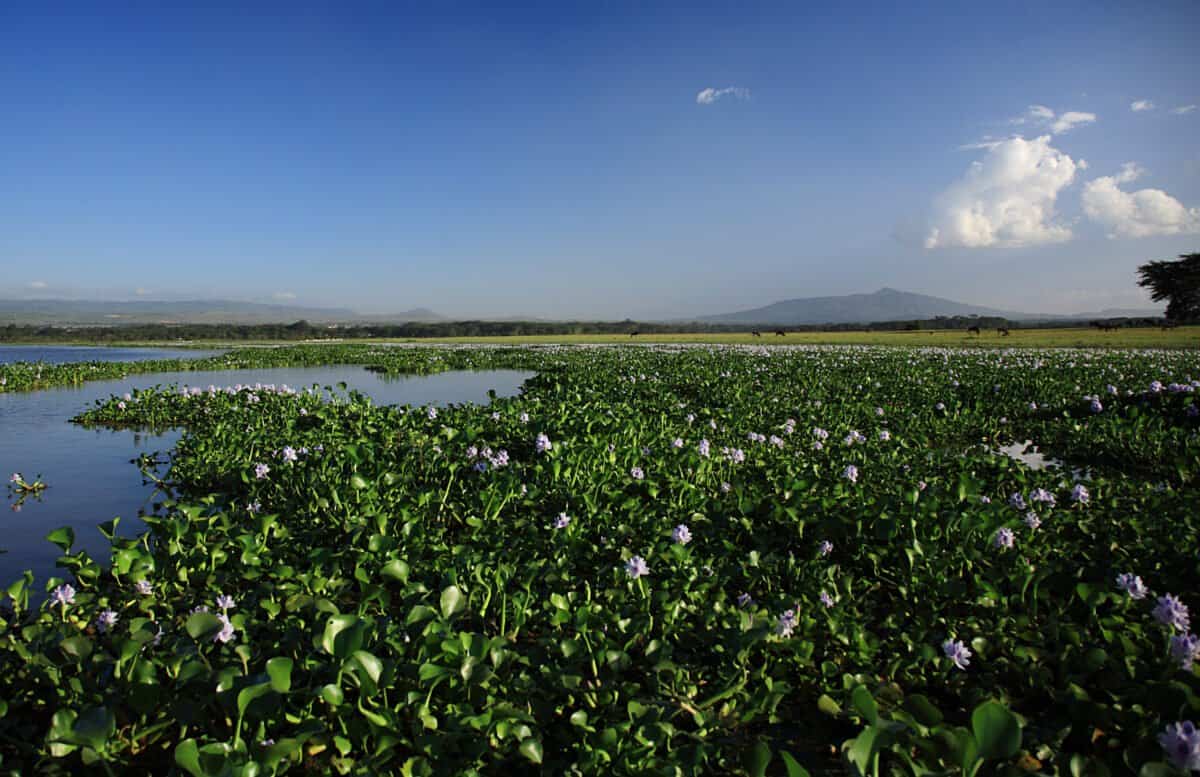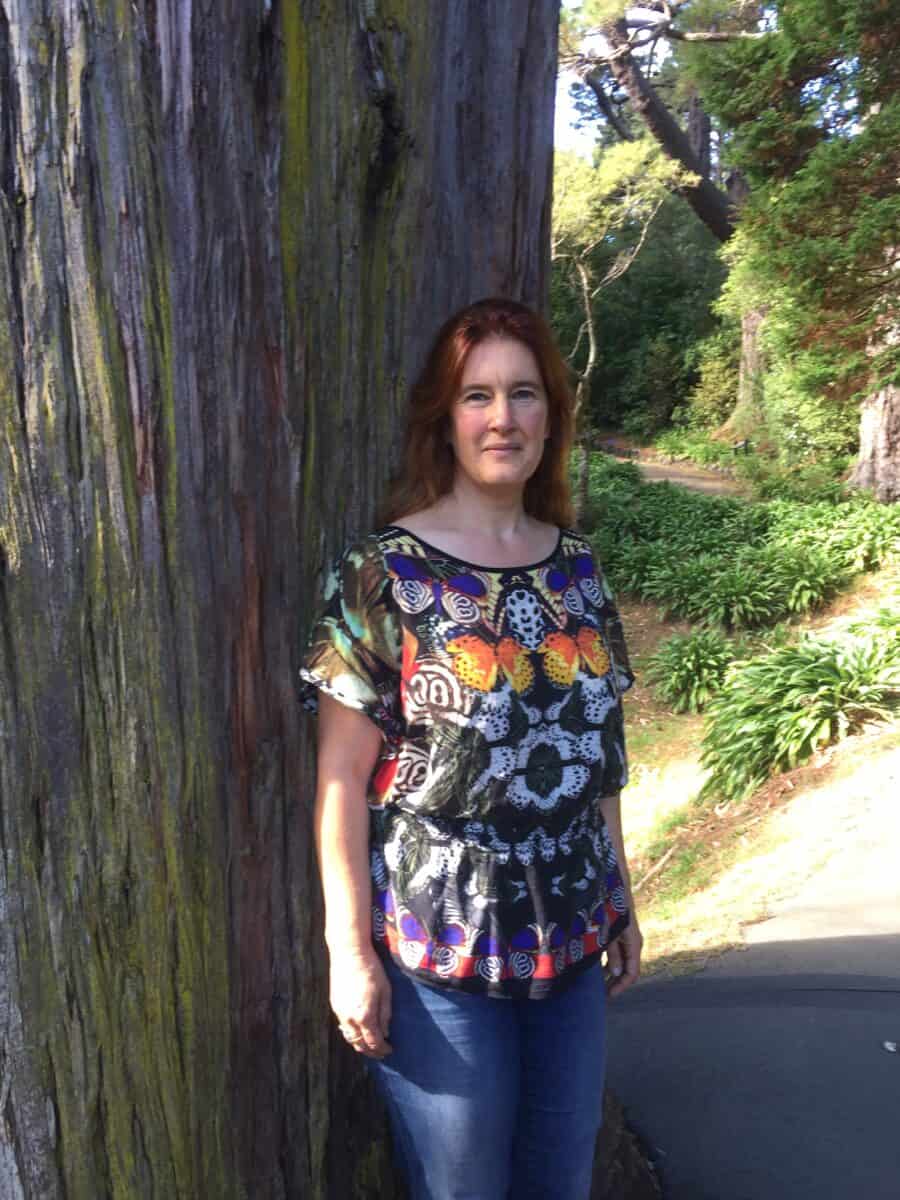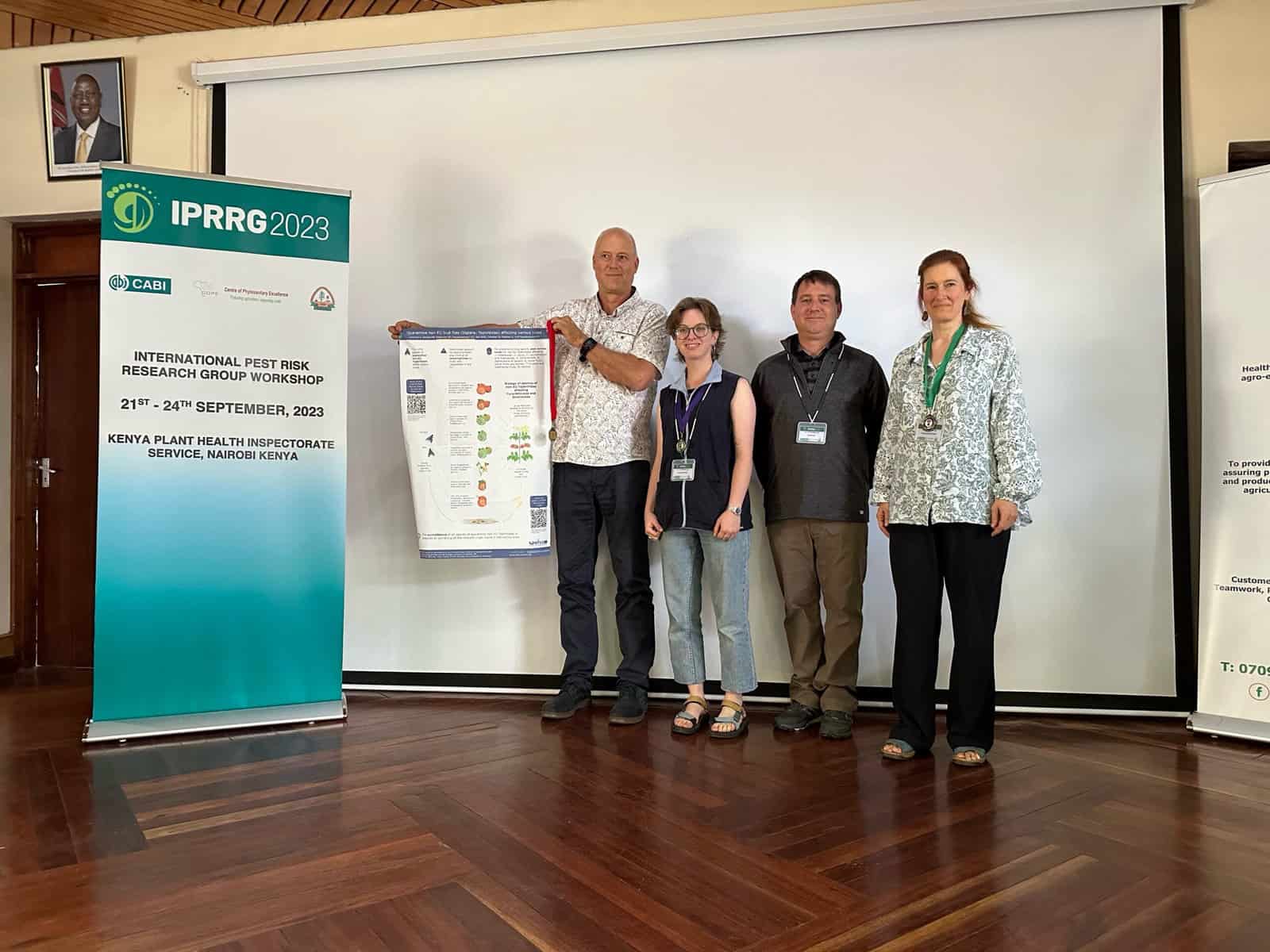When envisioning biosecurity risk in Africa, a layperson might deem those big bold ecosystems as unassailable by exotic pests. However, those in the know understand that African nations contend with an array of invasive organisms, and even share some problem situations with Aotearoa.
“The fall armyworm threatens massive economic damage when it infests food crops,” says Melanie, a contract researcher for SO3: He Tangata, He Taiao, He Ōhanga. “It’s particularly hard on maize, a very important crop across Africa.”
“It arrived as an invasive species in West Africa [from the Americas], and then spread across the continent. From there, the spread continued into Asia and Europe, and eventually got to us,” says Melanie.
The fall armyworm arrived in Aotearoa around February, 2022.
Other examples include infestations of water hyacinth (Pontederia crassipes), pictured below, and the Nile perch (Lates niloticus) in the great lakes, most notably Ukerewe/Lake Victoria. Aotearoa contends with similar incursions in our freshwater biomes.

Melanie says East African countries are working together to mitigate biosecurity risks.
“Countries like Kenya and Tanzania have long-established histories of trade, so they’ve been thinking about risk assessment for a long time – and they support countries that are less developed in those areas.”
The IPRRG held the conference in association with the Kenya Plant Health Inspectorate Service, Centre for Agriculture and Biosciences International, and Cervantes Agritech.
By holding the conference in Kenya, IPRRG prioritised the folding of local expertise into the international knowledge pool. Melanie reckons about half of those in attendance were African.
The “best presentation” award was voted on by delegates. So, how did Melanie win the hearts of her colleagues?
A clue lies on the homepage of The Turnstone, Melanie’s science communication website. The mission statement reads: “I believe that the science behind important issues should be accessible to everyone”.
Melanie’s presentation looked at the link between risk assessment and decision making. In particular, she’s interested in what makes a good decision.
“Information is only part of what makes a good decision,” she says. “For example, if you don’t have the right people involved it won’t be felt to be a good decision.”
It was highlighted in discussions that good decisions need diverse perspectives and voices.
“Even before you’ve defined the objectives, the people involved need to be considered. It’s those people who define the objectives and goals. And you can’t get those goals on the table unless you’ve brought those people into the room,” says Melanie.

The IPRRG conference marked Melanie’s first visit to Sub-Saharan Africa. In addition to the programme, she enthusiastically scheduled interviews with local experts, including with a group of women who are working in various aspects of women’s rights and development.
Melanie’s Kenya article series are available to read on The Turnstone and include titles such as “Mountain Mists: A botanist’s delight on Kenya’s highest mountain”, “Wildflowers of the Maasi Mara”, and “Mobilised: Kenya’s financial revolution gives me hope”.
In Mountain Mists, Melanie journeys up Mount Kenya, where she was able to observe alpine plants, some of which she recognised as related to New Zealand species.
“That was so exciting,” she says. “I was squealing with excitement at finding Kenya sphagnum moss and Kenyan gentiums. Tiny things growing in little cushions. My guide was really into plants, but he had never had someone so excited about these little things before.”
Kerry Donovan Brown
